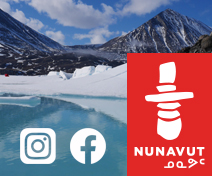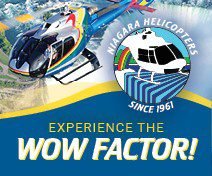Québec

Living at the Heart of it All
By Josephine Matyas
Canada’s largest province, la belle province, is known for its deep traditions rooted in centuries of French history and culture. The heart-warming customs of the people and communities are found on their warm smiles and pride of place and history.
That famous Québec passion is in the air. Visitors find themselves immersed in an irresistible tableau of experiences, sights and emotions that spark the beginning of a love affair with the province. Visit, share and open yourself to becoming wrapped in the heart of it all.
Four Season Adventures
Québec is a landscape of superlatives. There’s warmth, plus an energy and glow that blanket the province. Québecers love special events and festivals.
Everywhere, Québec’s National Holiday is celebrated on June 24th with shows, parades, bonfires and fireworks. There are music festivals: Montréal International Jazz Festival (Festival International de Jazz de Montréal), Québec City Summer Festival (Festival d’été de Québec) and many others.
Summer is the perfect time to visit pick-your-own farms and follow the province’s food trails, or become one with the unspoiled wilderness by hiking, climbing and paddling. There are opportunities for everyone drawn to the outdoors.
Autumn brings a dramatic splash of colour and springtime follows with the sweetness of maple syrup. A large percentage of the world’s maple syrup is produced in Québec.
Winter includes snowmobiling, cross-country and downhill skiing, snowshoeing, ice skating and dogsledding. Québecers celebrate hockey like no other spot on earth—the Montréal Canadiens are the oldest hockey team in the world that has played without interruption.
The Québec Winter Carnival—the world’s largest—anchors the winter with its snow slides, ice sculptures and canoe race on the frozen St. Lawrence River. Across the province, they pay homage to the cooler seasons—from the family-friendly Montréal en Lumière in Montréal to the fall Oktoberfest in Sainte-Adèle, and all points between.
Follow Your Tastebuds
There’s a deep connection between land and people. Québec’s gastronomic trails link the harvest of the countryside with the markets of the cities. The trails are known for artisanal cheese producers, small production vintners, local growers and specialty producers. Exploring the trails is a way to meet the people who create the province’s signature products, from foie gras to springtime maple syrup.
The Farmlands Route (Chemin du Terroir) loops through the Laurentians countryside, with stops at producers of wines and ciders, maple goods, fresh-picked apples and Québec’s famous fromageries.
Charlevoix’s Flavour Trail (La Route des Saveurs) links dozens of local growers, producers and restaurateurs who create and serve regional products such as ciders, artisanal beers, pâtés, cheeses, spices and fine chocolates (www.tourisme-charlevoix.com/en/what-to-do/routes-and-circuits/flavour-trail/).
Grape growers and vintners, and many bistros and restaurants, are a part of Québec’s Wine Route—La Route des vins (www.laroutedesvins.ca/en).
At the peninsula jutting into the Gulf of St. Lawrence, Gaspésie Gourmande brings together around 150 businesses who create or process products harvested from the land, sea and forest, as well as the shops, restaurants, chefs and B&B establishments that sell or serve their wares (gaspesiegourmande.com).
What’s New?
After a major renovation, the Insectarium is back. Get a new appreciation for industrious ants, hard-working bees, pest-controlling spiders and many other insects that we couldn’t live without. Check out the large glass vivarium where guests can observe insects, including free-flying butterflies (www.espacepourlavie.ca/en/insectarium).
Cirque du Soleil returns for its ninth Tribute Series show at the Amphithéâtre Cogeco in Trois-Rivières, celebrating Québec music icon Daniel Bélanger with a mesmerizing fusion of acrobatics and poetic storytelling. (www.cirquedusoleil.com).
A new permanent exhibition at the Huron-Wendat Museum has opened, giving visitors a look at important figures from the Huron-Wendat Nation (www.museehuronwendat.ca/en).
Kiamika Regional Park offers a next-level wilderness escape with the opening of the Blueberry Bay area. Find ready-to-camp sites, a canoe-camping hub, and a scenic new hiking trail featuring a panoramic lookout on Île de la Perdrix Blanche (www.reservoirkiamika.org/en).
The new Port of Montréal’s ultra-modern glass and steel observation tower has opened at the newly-developed Grand Quay (www.port-montreal.com/en).
Mont-Saint-Pierre’s new “mountain-by-the-sea resort” in Gaspésie is the ultimate thrill-meets-tranquillity destination, offering everything from beachside hikes and stargazing to off-piste skiing and heart-pounding free flight initiations (www.montsaintpierre.ca).
Ungava Polar Eco-Tours is a new Inuit-owned enterprise that welcomes visitors for a summer adventure on the Gyrfalcon Islands, offshore from the Inuit community of Tasiujaq in Leaf Bay, which competes with the Bay of Fundy for the world’s highest tides. Muskox and many species of birds can be observed on the islands, while boat outings on Leaf Bay offer potential encounters with polar bears in their natural habitat. With friendly Inuit guides, explore breathtaking natural landscapes and awe-inspiring Arctic wildlife and opportunities to view the northern lights (www.ungavapolarecotours.com).
Another Inuit-owned ecotourism enterprise, Nunawild, out of Kuujjuaq—Nunavik’s gateway—has been greeting visitors since last summer at its base camp located on the tundra near Wolf Lake. Observe muskox, tundra wolves, ptarmigans and other bird species, as well as the occasional caribou and black bear. Optional boat tours on the Koksoak River, camping trips to an archaeological site and cultural interpretive tours are also available (www.nunawild.com).
City Lights
The province’s unique European sensibility flavours the intersection of art, culture and history. This is a big part of the city centres—Montréal and Québec City—with their wealth of museums, galleries and special exhibits.
In Québec City, small music clubs, funky bars, boîtes à chansons (intimate venues for the province’s singer/songwriters) and music festivals like the Québec City Summer Festival (Festival d’été de Québec), one of Canada’s biggest music festivals, contribute to a vibrant arts scene (www.feq.ca/en).
Cosmopolitan Montréal sits at a cultural crossroads, rooted in both Anglo and francophone heritage. The city has put together itineraries to inspire visitors, from nightlife to shopping to annual festivals (www.mtl.org/en).
Montréal abounds with theatre and dance, music and circus arts, and museums and art galleries showcasing everything from cutting-edge works to timeless classics. An underground system of pedestrian passageways, RÉSO, connects Métro stations and corridors filled with boutiques and small shops.
Montréal is renowned for its lively summer gatherings—from jamming sessions to dance fests. In cool contrast, take in a concert at Old Montréal’s Notre-Dame Basilica, a neo-Gothic masterpiece with marvellous acoustics (www.basiliquenotredame.ca/en). Or visit the quays of the Old Port on foot, by Segway or hoverboard, where performances range from reggae to harbour symphonies created with ships’ horns.
Year-round, chic prevails in Old Montréal’s clubs, trendy bistros and the free-spirited Latin Quarter’s cocktail bars. The city teems with bars, discos, microbreweries, cigar lounges, cafés and outdoor terraces.
The Great Outdoors
Outdoor enthusiasts can soak up Québec’s untamed wilderness by visiting the province’s numerous parks. With thousands of crystal-clear lakes and an impressive range of wildlife, they are idyllic for camping, canoeing, fishing, cycling, mountain biking and hiking. In winter, the guarantee of snow creates a paradise for downhill and cross-country skiing, dogsledding and snow-shoeing (www.sepaq.com).
Every August, the sky becomes a canvas for the shooting stars of the Perseid meteor showers and the Velan astronomy pavilion at Domaine Saint-Bernard offers regular stargazing sessions (www.mont-tremblant.ca/en/what-to-do/f/199/velan-astronomy-pavillion-domaine-saint-bernard).
Campers can bring dogs along to certain Québec national parks, with the exception of the Anticosti and Île-Bonaventure-et-du-Rocher-Percé national parks (www.sepaq.com/animaux).
Two-wheelers take to “la Route verte,” a 5,300-km (3,293-mi.) web of cycling and multi-use paths that criss-cross the province, creating the largest cycling network in North America.
Spectacular sightlines are the norm at Québec public golf courses. One of the most challenging is Le Géant at Mont-Tremblant, a master’s 18-hole championship course carved out of the Laurentian landscape.
Chemins d’Eau is a tourist route dedicated to the Ottawa River (the province’s longest river), retracing the steps of the First Nations, explorers and wood barons (www.tourismeoutaouais.com).
In the Laurentian Mountains, north of Montréal, Le P’tit Train du Nord Linear Park is a former railroad track converted into a 234-km (144-mi.) level biking and walking trail—and a cross-country skiing, fat biking or snowmobiling trail in winter—between Saint-Jérôme and Mont-Laurier (www.laurentides.com/en). Or ride a panoramic gondola to the summit of Mont-Tremblant.
Whale watching from Tadoussac, Baie-Sainte-Catherine and Rivière-du-Loup, gets visitors close to nature with sightings of minke, humpback and even the rare blue whale, as do boat cruises from the tip of the Gaspé Peninsula to the seabird sanctuary at Bonaventure Island (www.quebecmaritime.ca).
Wedge Hills Lodge, nestled on the shores of the mythical George River, now offers excursions leaving the lodge by float plane to explore the Torngat Mountains—the natural border between Nunavik, Québec and Labrador. Explore and photograph this territory known as the Golden Peninsula by fat bike, packraft and/or hiking, or a combination of it all—from the comfort of the lodge, where you can also catch some pretty impressive Atlantic salmon (www.wedgehillslodge.com/tours).
A fishing outfitting camp, Inukshuk Lodge has been offering amazing adventures fishing for Arctic char on Ungava Bay and now also offers opportunities to discover wildlife—namely polar bears—and get familiar with the northern landscape and its inhabitants along the coast of Ungava Bay while taking part in a photography workshop (www.inukshuklodge.com).
Heritage And Culture
“Cité Mémoire” is an interactive way to learn about the history of Montréal. Also in Charlevoix use a free mobile app that guides users through points of interest. It includes daytime and nighttime scenarios, with short movies projected on buildings, streets and trees (www.montrealenhistoires.com).
Québec City is the only walled city north of Mexico, a UNESCO World Heritage Site and a textbook of 17th and 18th century architecture. Begin with a visit to Battlefields Park, also known as the Plains of Abraham, the site of pivotal clashes between French and English forces (www.ccbn-nbc.gc.ca).
Catch the view from Dufferin Terrace overlooking the St. Lawrence River, or stop for tea at Le Château Frontenac, one of the world’s most photographed hotels (www.quebec-cite.com/en).
The summertime New France Festival (Les Fêtes de la Nouvelle-France) in Québec City is a showcase of the roots of francophone culture. Costumed revellers celebrate all that makes Québec unique, from music and history to food and literature (www.nouvellefrance.qc.ca/en).
Indigenous Tourism Québec is home to the Pow-Wow Trail, a one-stop list of First Nations special events including music, dance, handicrafts and food (www.discoverindigenousquebec.com).
Must See, Must Do
The region of Saguenay-Lac-Saint-Jean is well-known for its premier biking routes, including the Blueberry Trail (Véloroute des Bleuets) encircling a scenic lake (www.veloroutedesbleuets.com/en).
Foresta Lumina in the Eastern Township’s Parc de la Gorge de Coaticook is an interactive multimedia trail that wanders along a night-illuminated pathway for a magical experience (www.forestalumina.com/en).
The famed aurora borealis lights up the sky from September to March in the Northern Québec regions of Eeyou Istchee Baie-James and Nunavik.
Try biking above the treetops at Au Diable Vert’s VéloVolant in the Eastern Townships—a pedal-powered canopy tour on a bike hooked to a cable, following a one-km (0.6 mi.) circuit (www.audiablevert.com/en/summer-activities/velovolant).
Readers who are fans of mystery author Louise Penny can follow the Three Pines Tour near the writer’s home in Québec’s Eastern Townships. The guided tours include sites that were the inspiration behind Penny’s novels (www.threepinestours.com).
Scenic Drives
Dominated by the highest mountain peaks of southern Québec, the Eastern Townships’ 193-km (120-mi.) Summit Drive reveals one gorgeous panorama after another.
Forged by glaciers, the picturesque Fjord Route follows the winding Saguenay Fjord—one of the longest fjords in the world (235-km/146-mi.)—with a never-ending show of imposing rock faces and majestic capes.
Route du Richelieu’s historic 265-km (165-mi.) transportation road traces both sides of the lovely Richelieu River, encompassing historic villages, archaeological digs, museums, heritage churches and bucolic landscapes.
The 280-km (174-mi.) King’s Road (Chemin du Roy) is Canada’s oldest roadway, linking Québec City to Montréal along the St. Lawrence River’s spectacular north shore.
Family Fun
La Grande Roue de Montréal is one of Montréal’s most iconic attractions and a hit with the kids! Located in the city’s Old Port, at 60 m (197 ft.) it’s the tallest observation wheel in Canada. Close by is the even more daring MTL zip-line (www.oldportofmontreal.com).





